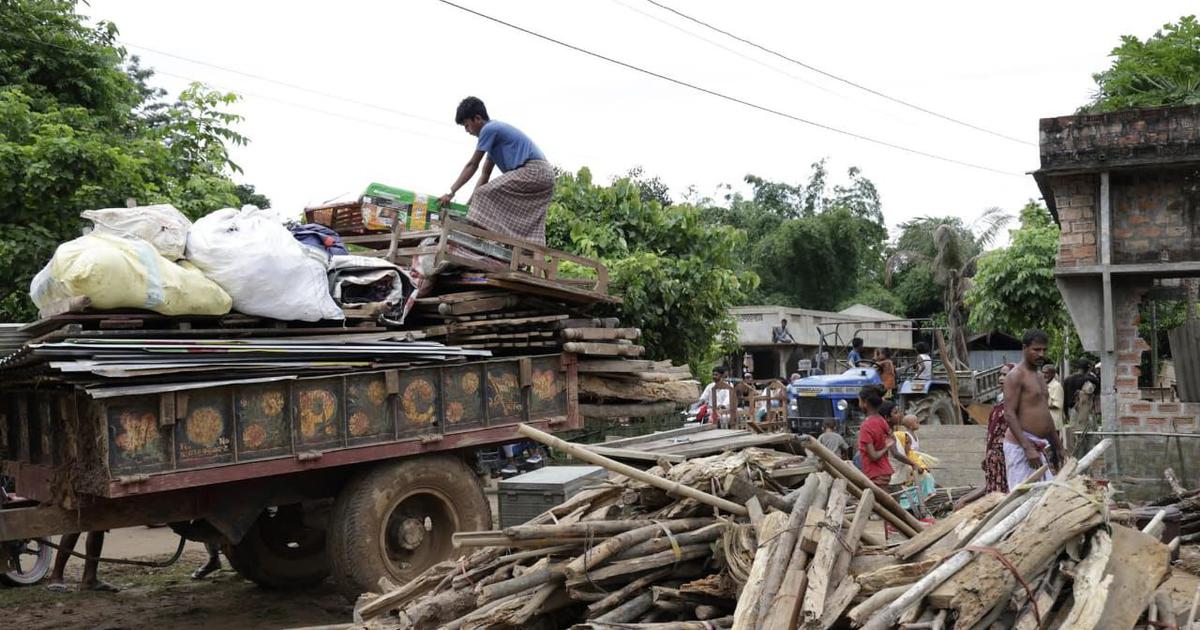The Rubble
What was lost in the Babri Masjid demolition, thirty years ago, and what remains
IN 1992, I worked as a correspondent for Eyewitness, a monthly video newsmagazine owned by Hindustan Times TV. The senior journalist Karan Thapar was the show’s executive producer. Our team had been covering Uttar Pradesh regularly, and I had visited the Babri Masjid in July. Two years earlier, the Bharatiya Janata Party president LK Advani had led a nationwide rath yatra for months to proclaim that Hindus had a right over the site, stoking communal violence along its path. In the winter of 1992, the atmosphere in Ayodhya began to heat up. Volunteers associated with the Rashtriya Swayamsevak Sangh, known as karsevaks, planned to congregate at the mosque on 6 December. Thapar decided to dispatch a group of four—three video crew members and me, the reporter—to Ayodhya. We expected the crowd to carry out a symbolic construction of the Ram Mandir around the mosque, which could be a story. Our team stationed itself in Faizabad and Ayodhya on 4 December. It had the makings of just another reporting trip.
Nothing could have prepared us for what happened. Beginning mid morning, on 6 December, over nearly six hours, thousands of karsevaks dramatically razed the three-domed, 464-year-old mosque to the soundtrack of fiery speeches by BJP and Vishva Hindu Parishad leaders. The Supreme Court had demarcated an area just outside the masjid for symbolic karseva. After walking around the area, Advani and his successor as BJP president, Murli Manohar Joshi, as well as the VHP’s working president, Ashok Singhal, had settled into the Ram Katha Kunj, a makeshift meeting ground situated a few metres away. Other Hindutva leaders, including Vinay Katiyar and Uma Bharti, made speeches, remarks and exhortations of various kinds to the assembled crowd, which cheered the vandalising mob. The karsevaks also attacked several journalists to prevent us from recording what was unfolding. They broke some of the journalists’ equipment. My colleagues and I managed to record some damning footage before being shooed away.
The paramilitary personnel guarding the mosque had left the premises early, and no other central forces were in the vicinity. By noon, even the policemen had become bystanders. The district administration and the police had a perch on a building next to the nearby Sita Rasoi mandir, which served as a viewing gallery. Most of my journalist colleagues were taking shelter on the ground floor. I hid in a nearby sweet shop. In the afternoon, some of us managed to listen to the All India Radio bulletin on our transistor sets. It spoke of “chhut-put kshati”—a bit of damage—to the domes of the mosque. In front of us, the mosque was being systematically smashed, unhindered by law enforcement. The BJP was in power in Uttar Pradesh, with Kalyan Singh as chief minister. PV Narasimha Rao of the Congress was the prime minister. Both leaders remained incommunicado, as the mobs eventually flattened the mosque down to the ground.






